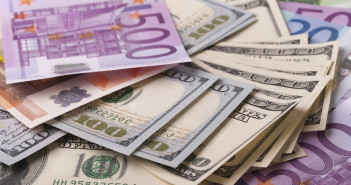The doom and gloom sends the safe haven euro to 1.13. The team at Credit Agricole explains what’s going on and examines if this can be sustained:
Here is their view, courtesy of eFXnews:
EUR regained ground broadly in recent days with investors attributing the move to the currency’s growing safe haven appeal. We agree that the EUR’s superior liquidity should continue to provide support especially against the risk-correlated G10 smalls. That said, the fact that investors have ‘re-discovered’ the EUR safe haven appeal only recently strikes us as rather odd.
Indeed, the single currency was languishing throughout the early stages of the latest market selloff, which started in January. In addition, the EUR is supported by safe haven inflows at a time when the selloff in the Eurozone bank stocks and peripheral bond markets is intensifying. Needless to say, the apparent calm in the peripheral bond markets and the recovery in the banking sector was a key ingredient of investors’ confidence in the EUR during the bouts of risk aversion in recent years.
We think that the selloff in the Eurozone peripheral bonds and bank stocks and the latest EUR-resilience are connected. In particular, we suspect that the surge in the BTP and Bono yields has eroded the value of the bonds held by foreign investors recently. In turn, the drop in their EUR-exposure necessitated the reduction of the short-EUR hedges with foreign investors forced to buy back the single currency in the FX spot market. In addition, concerns about the health of the Eurozone financial sectors have evoked memories from 2012 debt crisis when banks were repatriating money from abroad and supported EUR.
The above would suggest that EUR could remain supported so long as the selloff in the periphery and the banking stocks continues. That said, we doubt that the EUR resilience could be sustained if the peripheral bond market selloff escalates and triggers portfolio outflows from the Eurozone, which should weigh on the single currency. Indeed, this has been the experience during the selloff in the Eurozone stock markets last summer. The EUR was supported initially through the unwinding of short-EUR hedges. As the selloff escalated, however, it triggered portfolio outflows from the Eurozone in Q3 and Q4 2015 and the EUR safe haven appeal diminished significantly.
Last but not least, while repatriation into EUR by the Eurozone banks may indeed occur, we doubt that it will be at the scale seen in 2012.
For lots more FX trades from major banks, sign up to eFXplus
By signing up to eFXplus via the link above, you are directly supporting Forex Crunch.



